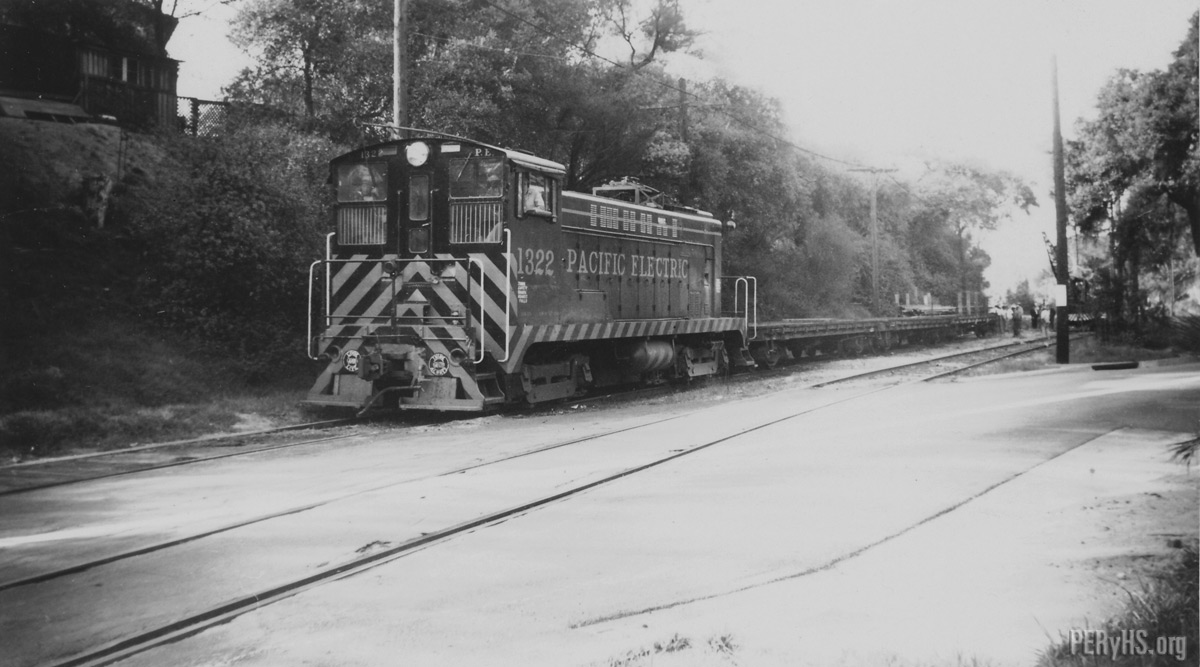1322 Dismantling the Oak Knoll Line
Pacific Electric electric switcher no. 1322 pulls a string of flatcars being used by the dismantling crew removing rail from the Oak Knoll Line. This image was captured at Oak Knoll Avenue on January 22, 1951.
Alan Weeks Photo, Alan Weeks Collection
Recent Posts
Showing 5 comments



Many thanks for posting this photo. I was in the area at the time, on a family excursion to Radio KXLA for a live broadcast of Cliffie Stone’s “Home Town Jamboree”. The studio was on the grounds of the Huntington Hotel, and I remembered seeing a 1320-class switcher on the scrap train on our way to or from the broadcast. (not bad for almost 60 years ago–some things just stick in the old gray cells.)
Bob Thanks for the memory. It is a sad picture but I thought it was significant enough to post.
A close look at the photo shows the trolley poles retracted; meaning the locomotive is running on diesel power.
As passenger service on the Monrovia – Glendora line was discontinued in the early 50s; there was freight service still in use. A daily diesel locomotive passed by the north end of the grammar school I was attending in Monrovia, to service the grain & fruit shipping company, located behind the passenger station at Myrtle and Olive in Monrovia.
Although the electric catenary power lines were dismantled in Monrovia, the locomotives still had trolley poles attached, but retracted. I would assume that the diesels ran on electric power when it was available; and under diesel power at other times.
These diesels did not have the ability to use catenary power.
The trolley poles were only used to operate the wig wags.
When I saw the Baldwin diesels with the trolley poles (being about ten years old at the time), I too thought that they ran on electric power when it was available. The slow-turning Baldwin de la Vergne engines reinforced this line of thinking. I also remember the 1650 GE 44-ton diesels with poles: their center cab design made them look like a new generation of electrics (and some latter day electric locomotives were build in a similar body style)